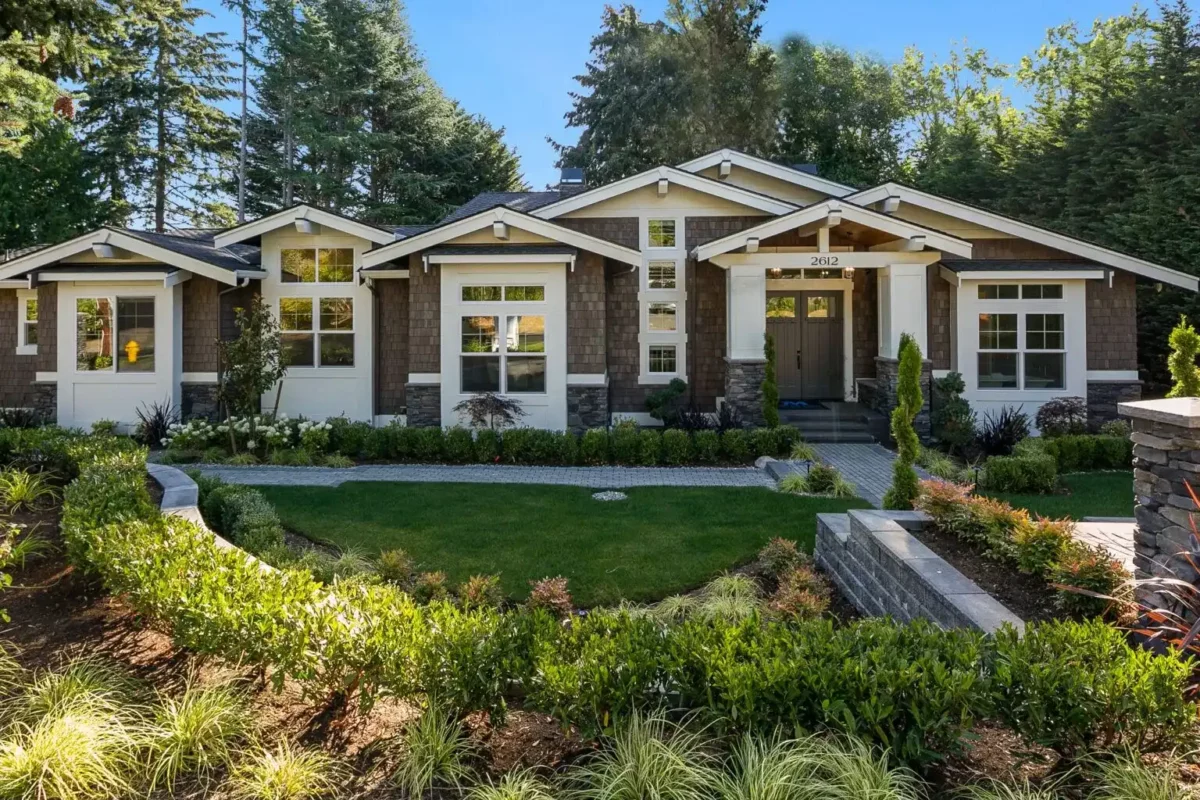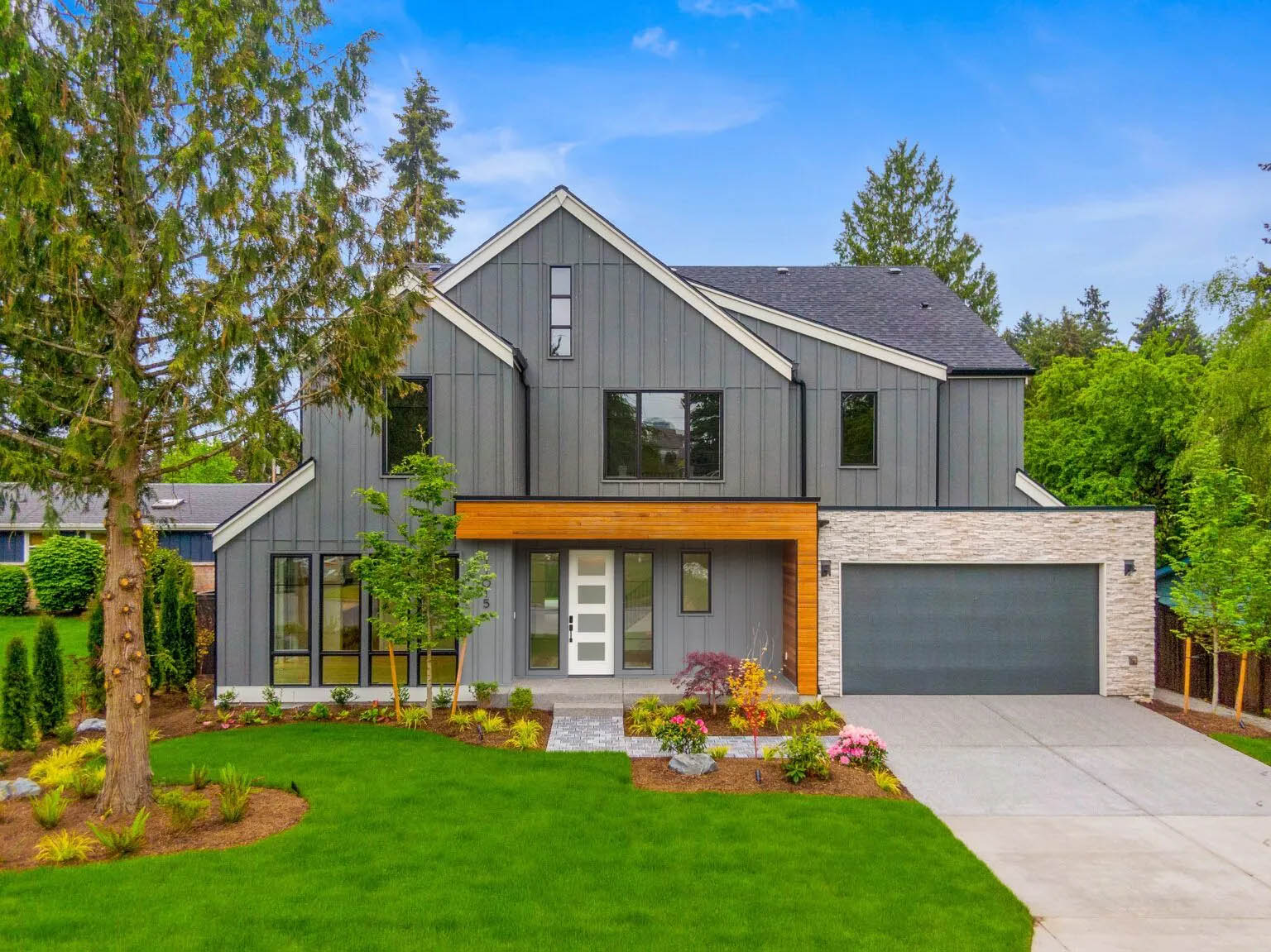A surefire way to get the home you’ve always been wanting is to build one yourself. Building your own home allows you to get the floor plan and design elements exactly as you desire. However, it does require more time and work than buying a move-in-ready home or resale property.
For instance, you need to know how to buy land and build a house instead of simply choosing a home listed on the market.
While there are plenty of considerations to navigate when building a new home, don’t let it deter you. The satisfaction of living in a home that’s tailored to you and your family’s needs will far outweigh challenges of the custom home building process.
Let’s take a look at four helpful tips you can use to simplify the process of buying a lot and building a house.
Tip One: Not All Residential Lots Are the Same
When shopping for a lot to build your home on, it’s important to know that vacant land varies a great deal from lot to lot. And, we’re not just talking about lot size, location, and pricing variables either – there are other, lesser known factors when buying a lot and building a house you need to know as they greatly impact the home you want to build.
Land Zoning
Land zones, or zoning requirements, define what a piece of land can and cannot be used for. Commercial, residential, and agricultural use are just three examples of what land is typically zoned for.
When purchasing land to build a home, be sure it’s zoned for residential use and that it meets your intended specifications. In Washington state, there are eight different types of residential zones that determine how many dwellings can be built on a piece of land.
For instance, if you buy an acre of land with an R-1 zone rating, you will only be allowed to build one dwelling on it. Knowing what zone your land is, and what that could mean to your long-term plans while living there, will help you choose one you won’t regret.
Where Do You See Yourself in 18 Months?
With JayMarc, a custom, luxury home can be yours in just 18 – 24 months.
Get StartedSetbacks
A lot’s setback are the rules that state how close your home can be to the property line. For instance, if a lot’s established setback states a building must be 20 feet from the front-facing property line, your home must be a minimum of 20 feet from that line.
Setbacks are essential to preventing unwanted encroachments between neighbors, to minimize fire risks, retain property values, and meet public and utility access requirements.
When buying a lot to build one, be sure to know its setbacks and if they will work with the type of home you have in mind.
Feasibility
When buying land for a home, it’s easy to assume the land you have been sold is suitable for building on. In reality, that is not always the case. A piece of land may have the bucolic ambience you want to enjoy with your morning coffee, but may also be beside a piece of wetlands that drains onto the property. In that case, the land may not be feasible for your interests.
“Unless you have feasibility studies conducted on a piece of property, a buyer cannot be certain that the land they’re purchasing can support the home they want to build on it. A feasibility study will evaluate the land and assess it against what you want to develop on it.”
–Rob De Clerk, Feasibility + Preconstruction Project Manager, JayMarc Homes
Before agreeing to a piece of land, be sure the right feasibility studies have been completed. If you’re unsure what you need to consider or learn from a feasibility study, connect with a reputable builder or engineering firm that can assist with this crucial process.
At JayMarc Homes, a thorough feasibility study is part of our process. We have a dedicated feasibility team of industry experts to guide and advise you through this complicated and crucial process.
Other Factors to Consider When Evaluating Land to Build a Custom Home
| Land/Lot Feature | What You Should Know |
| Utility hookups | Does the land have access to public utility services? Is essential utility infrastructures in place? If not, what will the cost be to access public utilities? Or does the land need a septic system and well drilled? |
| Internet connectivity | Does the land have access to high speed internet and cables? If you’re not sure, visit the FCC National Broadband map to find out. |
| Developer requirements | If you’re buying a lot to build on from a developer, in a new community, be sure to know what the developers’ building requirements are. This goes beyond setbacks and easements to include aesthetics, building height minimums and maximums, and even rules for your landscaping choices. |
| Topography | The topography of your land will greatly influence what you can and cannot build and the cost of preparing a site for building. |
| Environmental factors | Consider the presence of protected species or habitats on the land and if that will impact what you want to build. |
| Future development plans | Know what the future will look like in the area you build your new home. Will there be new amenities, like schools and public transportation? Will the view, privacy, and traffic congestion change as the area is built up? |
Tip Two: Understand Financing Options Ahead of Time
Tip Two: Understand Financing Options Ahead of Time
If you’re already a homeowner, you’ve likely experienced financing the purchase of your home including mortgage rates, down payments, and other factors. When buying land for a new home, however, the financing requirements are very different.
Banks see financing land as a riskier investment than financing a house. As such, financing a land purchase and home construction is markedly different than obtaining a traditional mortgage.
For land, you’ll likely need a Land Loan, which is for purchasing land, or a Construction Loan if you plan to build on your new land immediately. These loans usually require a larger down payment—sometimes up to 50%—and carry higher interest rates due to the perceived higher risk.
If you’re comfortable with a traditional mortgage-style loan, you may prefer a construction loan. Construction loans have the unique feature of converting into a standard mortgage once building is complete. However, this would require you to purchase a pre-developed lot that needs minimal remediation prior to building.
Given the complexities of land financing, it’s wise to consult with a financial advisor or a lender specializing in land and construction loans to effectively navigate your options.
| Other helpful articles on custom home building you’ll like: |
Tip Three: Be Prepared to Move Quickly On a Lot Purchase
The need for new homes far outweighs what’s available in most states and buying a residential lot is very competitive. In Washington State, for instance, around 49 000 new homes are built each year, yet, to keep pace with the area’s growing demand for more housing, that number should be closer to 71 000.
This level of demand means when a lot comes up for sale, it tends to sell quickly. To ensure you don’t miss out on a lot you and your family love, be as prepared as possible in advance so you can make a competitive offer. Having your finances in order and working with a real estate agent experienced in vacant land sales are two ways to be prepared.
Some tips for being prepared to make an offer on a lot include:
- Get your finances in order ahead of time. This means understanding your budget, establishing a plan for financing, and having your lender lined up in advance.
- Know what you want in a plot of land. Are you wanting to develop the land yourself, or would you prefer an already developed lot that you can build on right away?
- Work with a builder before buying land. The land you buy will determine what type of house you build. If you have a particular vision of a home in mind, speak with a builder who can instruct you in what to look for in a lot that is suitable for what you want.
- Determine what you’re willing to compromise on. Land is in high demand and finding what you want, for the price you’re willing to pay, may not be possible. Be clear on what you’re willing to compromise on and what would be a clear deal breaker before entering negotiations with a seller.

Tip Four: Partner With a Builder Early On
Partnering with a builder before you own land or have a fleshed-out home design may feel like you’re jumping the gun on your project, but it’s actually a wise move. By partnering with a reputable home builder early on, you set yourself up for success and prevent yourself from enduring a myriad of frustrations and challenges.
Selecting a builder requires consideration – you’ll be working with this person or team for close to two years or more – it should be someone you trust, has a proven track record, and is as invested in your new home build as you are.
Some tips to consider to help you choose the right builder include:
- References. Do your homework on any builder you are considering. How many homes do they build a year? What do past clients say about them? How do they support their new home warranties?
- Transparency. Work with a builder that keeps you in the loop at every step of the way. Building a home can be challenging. You need a team you know you can trust to communicate with you regularly and be available to you when questions arise.
- Education. Does the builder help to educate you on the building process? Building a home is a complex endeavor that requires people who help you understand the process so you can make informed decisions with confidence.
- Full service. Having a builder that can be with you at every stage of your home build will make the process faster, less challenging, and produce a home you’ll love. Look for a builder that offers more than residential building services such as architectural design, interior design, or permitting and engineering services.
Make the Step-By-Step Process of Buying Land and Building a House Easier with JayMarc Homes
Every step of buying a lot and building a house is critical. And you shouldn’t have to face these steps on your own. If you’re in the Greater Seattle Area, connect with the professionals at JayMarc Homes.
We’re an award-winning, full service new home building company that helps homeowners realize their custom home dreams.
To learn more about our services, and to get started on building your ideal home in the Seattle area, contact us today.
